Atalaya Castle
Introduction
Text-to-speech Audio
Images
Atalaya Castle
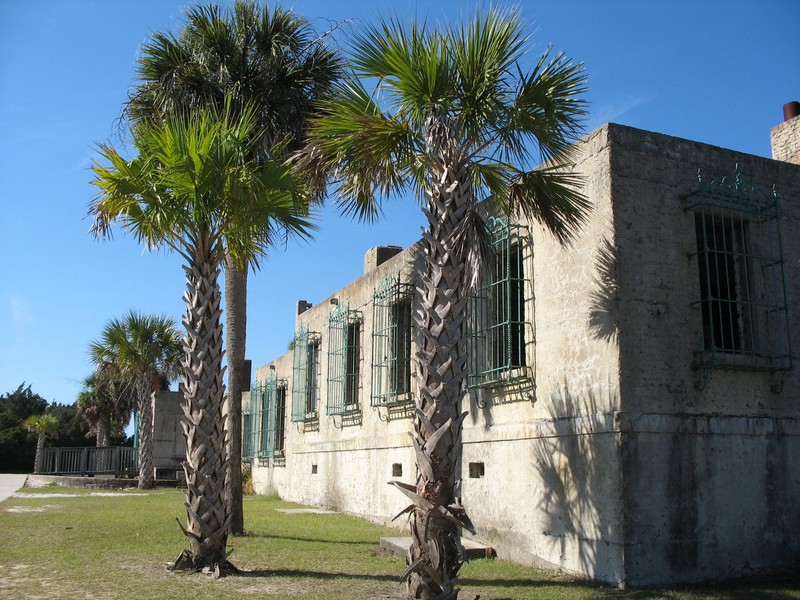
View of the courtyard
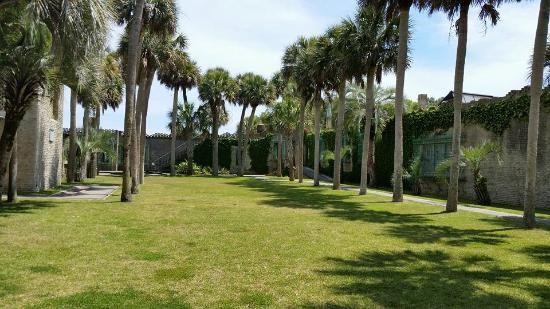
Description: "Floating Copper Chimney Top. Strong winds off the inlet often blew chimney smoke back into the rooms. Archer disliked the smoke and began looking for a solution. Eventually, he designed rotating copper chimney tops that moved with the wind."
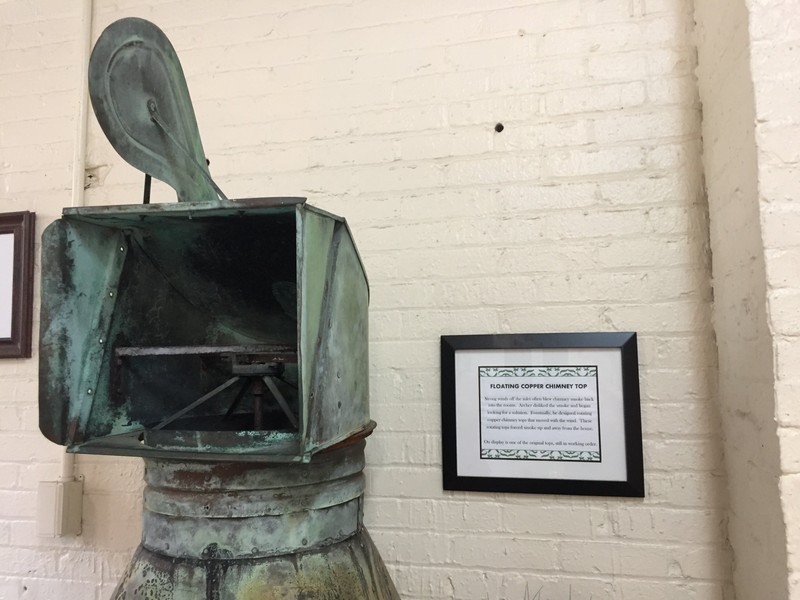
Inside of the old garage. It now houses articles and photos of the Castle.
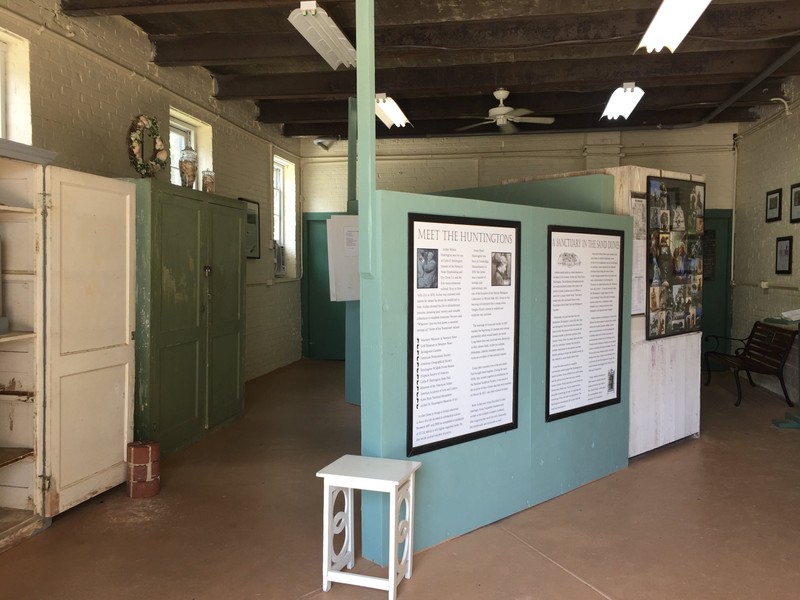
Anna and Archer Huntington (L) and members of their staff are seated on Atalaya's oceanside terrace in this photograph dated February 1938. Credit: Brookgreen Gardens
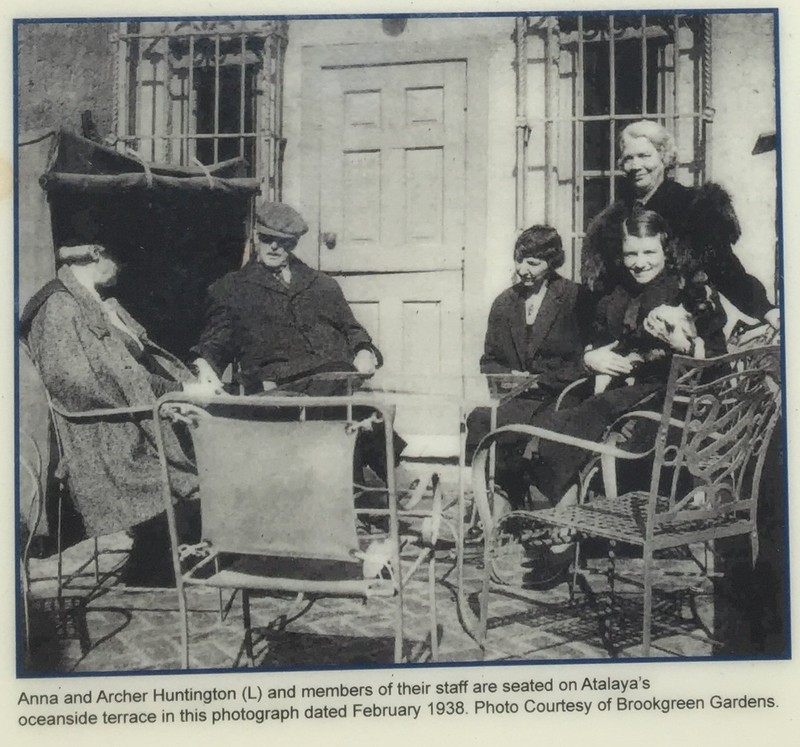
Entrance to Atalaya. Located to the left is the garage and to the right is the stables and kennels.
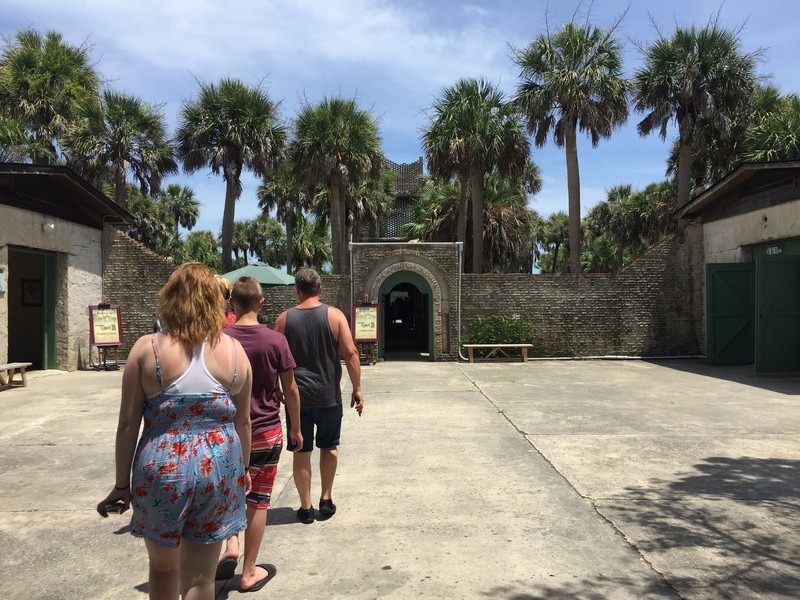
The wrought iron grills on all the windows that serve as hurricane protection were designed by Anna.
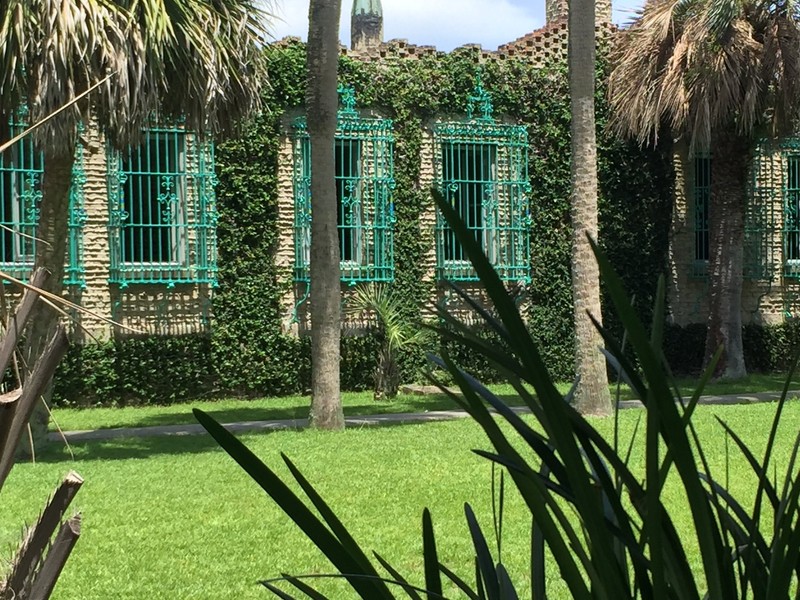
The breakfast room that leads up into the dining room. The room originally had a door that lead out onto a small patio overlooking the ocean and was a favorite spot of the Huntington's to enjoy their coffee.
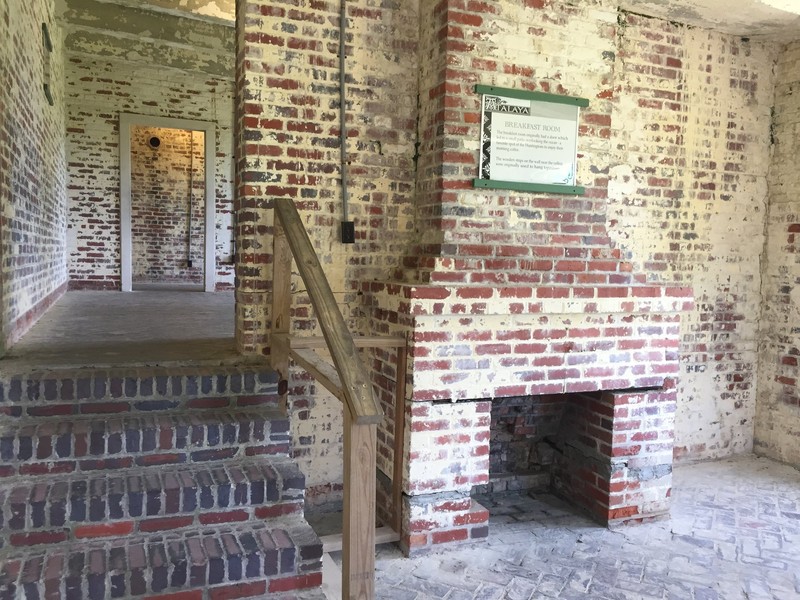
Anna's indoor studio. The high ceiling and windows allowed for plenty of lighting in the colder months.
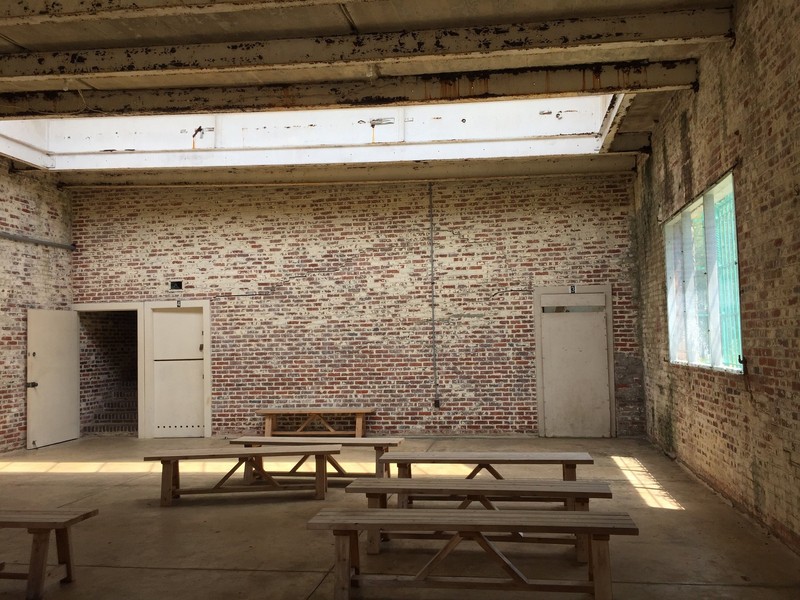
Upclose of the watchtower. It served as a water tower, providing water pressure to the building.
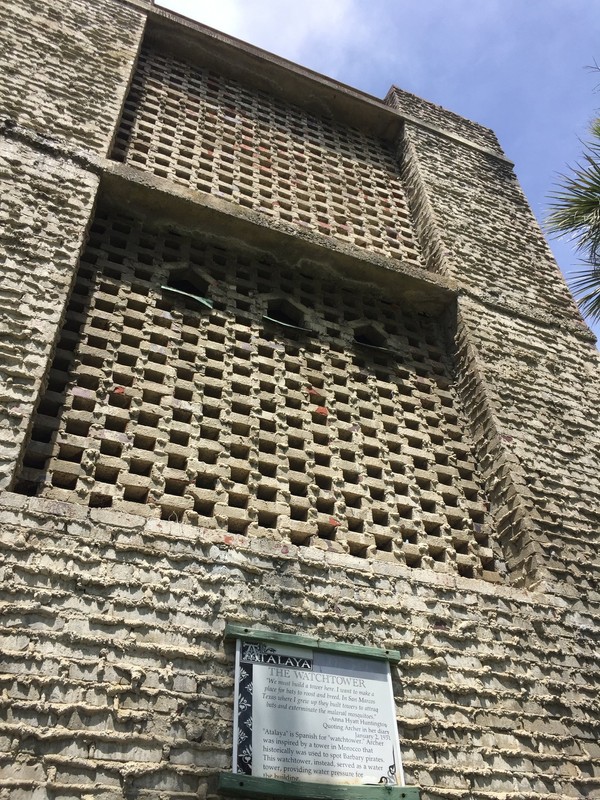
Another photo of the wrought iron gates that were designed by Anna Huntington. Down below leads to the cypress water tank, which is closed to the public.
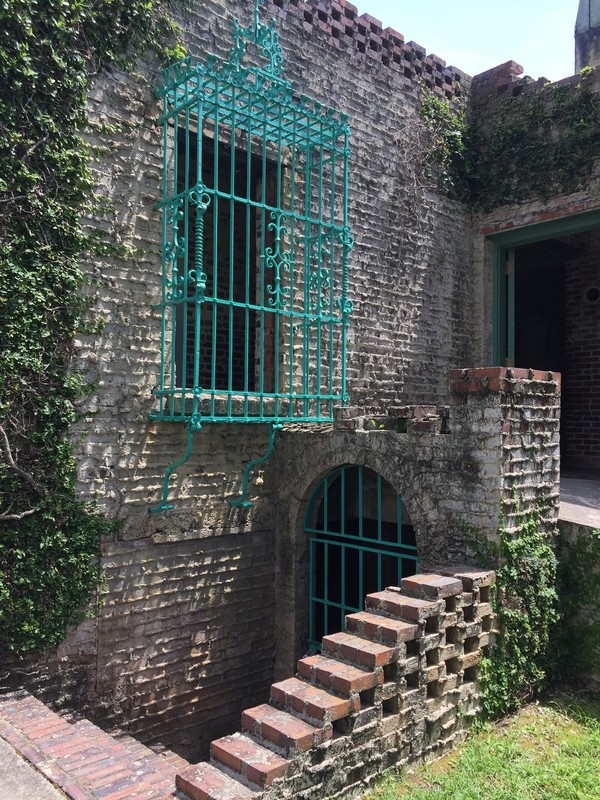
View from the parking lot. Side shown is the north side and to the left is the east side facing the ocean.

Backstory and Context
Text-to-speech Audio
Archer Milton Huntington purchased Brookgreen and three adjoining plantations (that originally consisted of over 9,000 acres of mixed land) in January 1930 as a site for a winter home and as a setting for Anna Hyatt Huntington's sculpture work. They used part of that acreage to build the first public sculpture garden, known as Brookgreen Gardens, to showcase Anna’s work.
Archer insisted that the house be built by local laborers to help boost the economy of the region during the Great Depression. They employed many local people to work at the house and gardens. The maids and servants had their own living quarters inside the home.
Archer was a philanthropist from New York City and designed the house to be a winter residence for him and his wife after she was diagnosed with tuberculosis. Archer was an Spanish historian and he designed the house after Mediterranean coastline Moorish architecture. Anna designed the wrought iron grills that serve as hurricane protection on all the windows.
The castle has 30 rooms laid out around three sides of a courtyard. In the center of the courtyard, surrounded by native plants, is a water tower that is 40-feet tall after which the house was named. "Atalaya" means "watchtower" in Spanish. It is functional in design, having once contained at 3,000-gallon cypress water tank located beneath the house. Water drawn from an artesian well was then pumped into a 10,000-gallon concrete cistern where the sand settled. Various other areas included a dining room, sunroom, library and bedrooms and indoor and outdoor studios for Anna to work on her art, and animal enclosures where they kept bears, horses, monkeys, and a leopard. Anna used live animals to model her sculptures after. During the colder months, heating was done entirely by using coal room heaters and wood-burning fireplaces.
During World War II, the Huntington’s left Atalaya and let the United States Air Corps use it as barracks.
The Huntington’s returned to Atalaya in 1946 and 1947. After that, Anna’s studio was moved to another portion of the property in Brookgreen Gardens, and the rest of the furnishings, that weren’t donated elsewhere, were sent to Connecticut after the death of Archer in 1955. Anna visited the house again only two more times in 1956 and 1958.
In 1960, 2,500 acres of the former estate, including the house and sculpture garden, was leased for free to the state of South Carolina. Huntington Beach State Park was formed and now maintains the house and grounds and offers guided tours during part of the year. Atalaya Castle was placed on the National Register of Historic Places in 1984 to preserve the history of Anna Hyatt Huntington and her husband Archer Huntington.
Today the Castle is open to the public and is known to be a premier wedding venue. The Castle's once spectacular beach view is now hidden with trees and shrubs. It sits right beside a parking lot for public beach access inside the Huntington Beach State Park in Murrell's Inlet, SC. There is a small fee to tour Atalaya--$2 per person for self-guided tour and $5 per person for the audio-guided tour. There is also a fee to get inside the state park, but parking is free. In tribute to Mrs. Huntington, the annual Atalaya Arts and Crafts Festival is held in the Castle during the fourth weekend of September.
Cite This Entry
M., Ben and Hannah Swartz. "Atalaya Castle." Clio: Your Guide to History. September 1, 2018. Accessed April 14, 2025. https://theclio.com/entry/27372
Sources
Sigmon, Daniel R. "Atalaya." National Park Service - National Register of Historic Places. September 7, 1984. http://focus.nps.gov/GetAsset?assetID=ce0874eb-a9f6-4f23-8a88-1c1d4dc692fe.
History of Atalaya Castle in Murrell's Inlet, SC. Friends of Atalaya Castle. Accessed September 01, 2018. http://www.atalayacastle.com/history/.
Atalaya: The Huntington Winter Home. Huntington Beach State Park. Accessed September 01, 2018. http://www.huntingtonbeachstatepark.net/atalaya.html.

